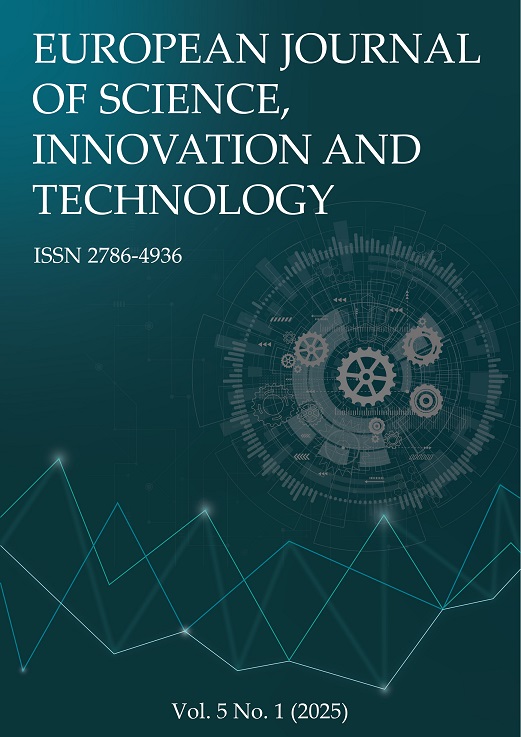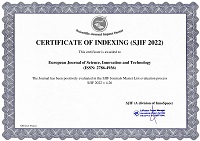Patent Stability and Current Technological Trend of Asynchronously Communicated Gendered Communicative Pattern Patent: Unfiltered Fieldwork Discourse Analysis
Abstract
In a time when computer technology can be used to prevent "built-in natural communication", communication transmission is directly being damaged via the "insertion installation" of "communicative taboo objects" that cause the intentional professional ruin of people for whom communication is a working tool, imposing the obsolescence of asynchronous communication as primary and essential. Asynchrony as a time lag in a communicative performance, the very equivalent to gender-conditioned redaction, could be seen as the only solution to cyberbullying communicative issue because the problem of "synchronous interference" in the conception of discourse does not necessarily have to be visible in the asynchronously delivered communicative act usually performed via its written result markers. The paper is conceived as an attempt to present the timelessness of a professionally needed asynchronous communication pattern. The patent originality of the asynchronicity research itself is a gender-edited communicative phenomenon need derived as a social communicative consequence that urges asynchronously conscious communicative practice. Humanoid, manually processed corpora analysis methodology practice of the study as a current rarity enables descriptive innovation conditions and depicts the daily communicative needs via descriptive, schematically evaluated discourse elements, and unfiltered discourse analysis results are reassuringly accompanied with a cumulative statistical method. The problem of structurally unintentionally imposed aftermath of socially derived communicatively necessary gendered language is being presented via an introductory discussion insight into the current mainly cyberbullying issue of interpreting structuralism in linguistics, poststructuralist and gender variation, the need for interdisciplinarity and the classification of asynchronous as a socially conditioned patent result of variation in the aftermath of linguistic asynchrony, cyberbullying and social-communicative anxiety via the territorially researched unfiltered discourse sample.
References
Cameron, D. (2003). Gender and Language Ideologies. In J. Holmes & M. Meyenhoff (Eds.), The Handbook of Language and Gender. Oxford: OUP.
Coleman, J. C. & Hendry, L. B. (1999). The Nature of Adolescence. Psychology Press. https://books.google.ba/books/about/The_Nature_of_Adolescence.html?id=mDizTBQto3gC&redir_esc=y
Crystal, D. (2001). Language and the Internet. Cambridge: Cambridge University Press.
Herring, S., Johnson, D., & DiBenedetto, T. (1998). Participation in electronic discourse in a "feminist" field. Oxford: Blackwell.
Holmes, J., & Meyerhoff, M. (2003). The handbook of language and gender. New Jersey: Blackwell.
Lenard-Božić, B. (2016). Gender differences in the length of words and sentences on the corpus of congressional speeches. Imperial Journal of Interdisciplinary Research, 2, 1417-1424.
List of new members of the 119th United States Congress (2025, February 27). In Wikipedia. https://en.wikipedia.org/wiki/List_of_new_members_of_the_119th_United_States_Congress
Livia, A. (2003). “One Man in Two is a Woman”: Linguistic Approaches to Gender in Literary Texts. In The Handbook of Language and Gender (pp. 142-158). https://www.researchgate.net/publication/227992478_One_Man_in_Two_is_a_Woman_Linguistic_Approaches_to_Gender_in_Literary_Texts
Majetic, S. (2019/20). A sociolinguistic analysis of asynchronous communication with special reference to gender differences in language use [Unpublished Ph. D. dissertation]. Sarajevo: University of Sarajevo.
Park, G. et al. (2016). Women are Warmer but No Less Assertive than Men: Gender and Language on Facebook. Vermont: University of Vermont.
Perović, S. (2014). Analiza diskursa: Teorije i metode. Podgorica: Institut za strane jezike.
Pišković, T. (2018). Uvod u rodolektologiju. Zbornik radova o jeziku, rodu i spolu. Zagreb: Filozofski fakultet Sveučilišta u Zagrebu.
Tannen, D. (1990). You Just Don't Understand: Women and Men in Conversation. New York: Harper Collins.
Tannen, D. (2001). Talking from 9 to 5: Women and Men at Work. New York: William Morrow Paperbacks.
https://forum.klix.ba/ 27th Jan. 2019
https://forum.klix.ba/ucp.php?mode=register 27th Jan. 2019
https://www.google.ba/search?q=word+count&sxsrf Jan. 2019
www.copyraonica.com Jan. 2019
Copyright (c) 2025 Senka Majetic

This work is licensed under a Creative Commons Attribution 4.0 International License.


 ISSN
ISSN 











